The WWII History in Pays de Vire, Calvados
Right before the Second World War, the economy of the Pays de Vire was largely dominated by agriculture. This very dense bocage area is mainly made up of small family farms which combine livestock and cereal crops to subsist. Weekly markets and major cattle fairs such as the one in Villers-Bocage are the main meeting places for the local economy. However, some towns such as Vire or Condé-sur-Noireau have been, since the beginning of the 19th century, important industrial cities where textile factories, agrifood (butter factories, Andouille de Vire, cheese factories) and distilleries rub shoulders. Calvados was at this time the leading producer of butter in France. The railway allows the sending of fresh products to Paris (butter, cattle, poultry, eggs).
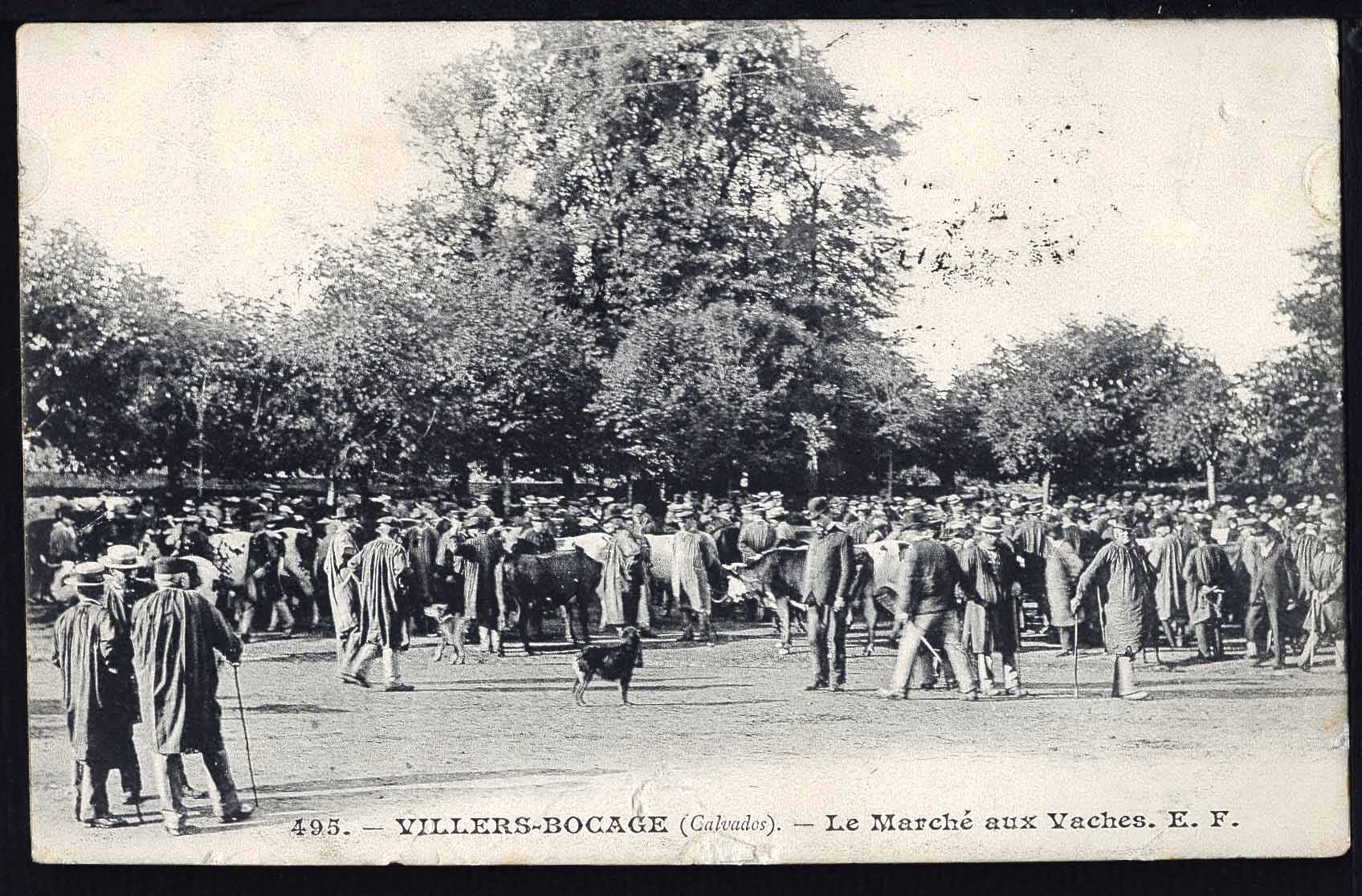
| Under the German occupation |
From the beginning of the occupation in June 1940, Lower-Normandy was the French region where the most German soldiers were concentrated, around 130,000. The department of Calvados held indeed a strategic position located in front of the United Kingdom.
The lack of products is quickly felt because of abusive requisitions and the looting of German troops. With the scarcity of many everyday consumer products (butter, meat), some producers and traders are fleeing official markets and sell their food at exorbitant prices. Normandy is developing a black market with regions where there is no agricultural production, especially Paris and its suburbs.
Germany needs metals to fuel its arms factories. The Vichy regime starts a large collection of non-ferrous metals and get rid off some of its statues and Calvados was not spared. The Statue of Admiral Dumont d’Urville in Condé-sur-Noireau is unbolted, the same for the one of Richard Lenoir in Villers-Bocage, a great industrial manufacturer from Epinay-sur-Odon. The Castel Statue in Vire barely escapes from the cast iron.
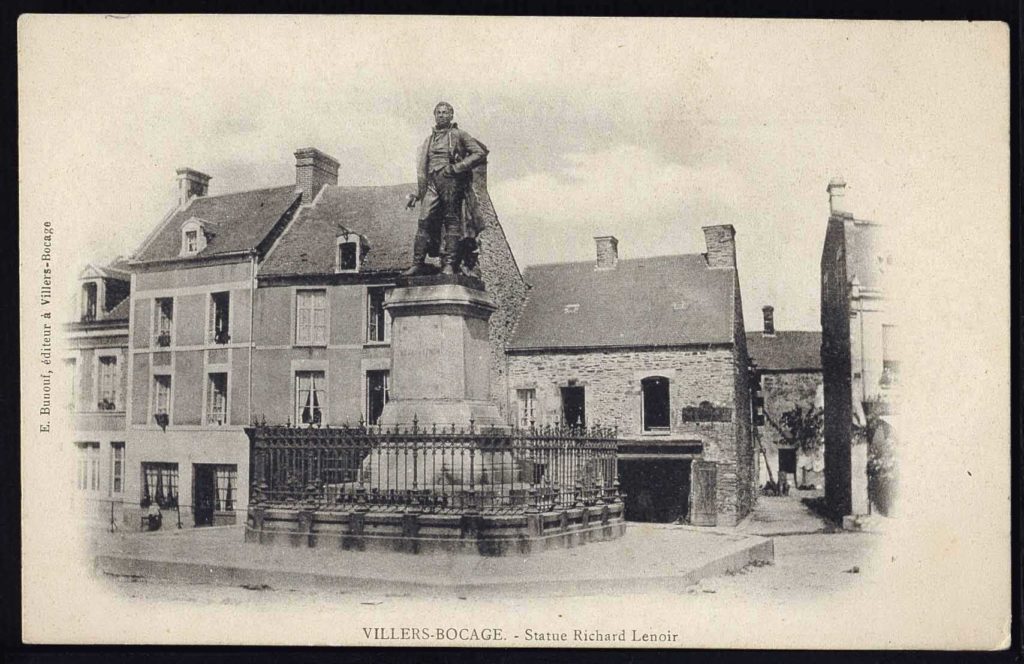
Statue de Richard Lenoir à Villers-Bocage 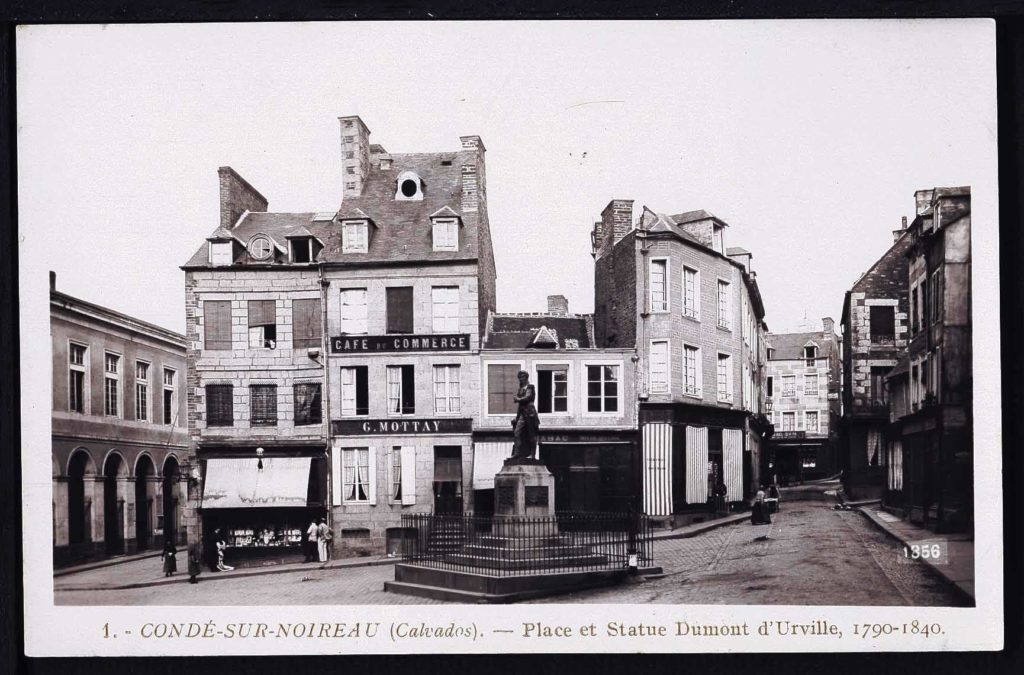
Statut de Dumont D’Urville à Condé
All these decisions taken by the occupier carry weigh on people’s daily life and provoke strong hostility towards the Germans. Emerge consequently, an Anglophile spirit and an adherence to General de Gaulle’s speeches.
The Resistance
In the department of Calvados, the first acts of Resistance appeared from November 1940. The Resistancewas particularly active in the bocage and was accentuated with the establishment in February 1943 of the STO (Service du Travail Obligatoire, forced labour by french workers). The Resistance was more active in 1944 by receiving arms, materials and preparing the support for the D-Day landings. The Resistance in the bocage around Vire benefits a strong support from Lieutenant Jean Renaud Dandicolle, agent of the British secret services, originally from Bordeaux. He had the mission to organize a parachuting of weapons and to set up maquis in anticipation of the Landing. Under the pseudonym of « Captain Jean », he made for three months many trips in Calvados where he got in touch with the local Resistance. Several parachutes took place in Calvados under his responsibility, in particular in Montchamp and Saint-Marie-Outre -Eau.
The Resistance paid a heavy price in the area, as evidenced by the monument at Montchamp erected in honor of the 60 Resistants fighters from the arrondissement of Vire (Condé-sur-Noireau included) who were shot or deported.
| The Liberation |
The bombings
General Eisenhower appointed as Supreme Commander of the Allied Expeditionary Forces for the Overlord Operation decides to use heavy bombers to support ground troops before and during the Liberation. For the invasion to be successful, the maximum number of men and equipment must be landed and the arrival of German reinforcements delayed. Several towns in Lower Normandy are designated by the high command as being road nodes to block or to destroy. American heavy bombers carry out four missions on D-Day. The last operation of the day called « Royal Flush » is scheduled for the early evening around 8 pm. 736 B-17 and B-24 bombers are requisitioned.
Vire and Condé-sur-Noireau are hard hit but a few hours later, the Allies decided to start again, and the Royal Air Force specializing in night bombing takes over. On the morning of June 7, the populations fled the disfigured towns to the surrounding countryside. The bombings will cause 252 civilian victims in Condé-sur-Noireau and more than 400 for Vire.
Between June 11th and 15th 1944, a rain of bombs fell on the small town of Aunay-sur-Odon killing 187 civilians.
At the end of June, the Allies fail to take Caen and launch the Operation Epsom. This consists in breaking through the German front bypassing the Lower Normandy’s Capital to the west while taking the bridges over the Odon River. The Allies decide to bomb Villers-Bocage in order to make the crossroads impracticable, to obstruct the roads with rubble and prevent the Germans from benefiting reinforcements from the west of Caen. On June 30 at around 5 p.m., 250 Lancasters dump 1,100 tonnes of bombs on Villers-Bocage.

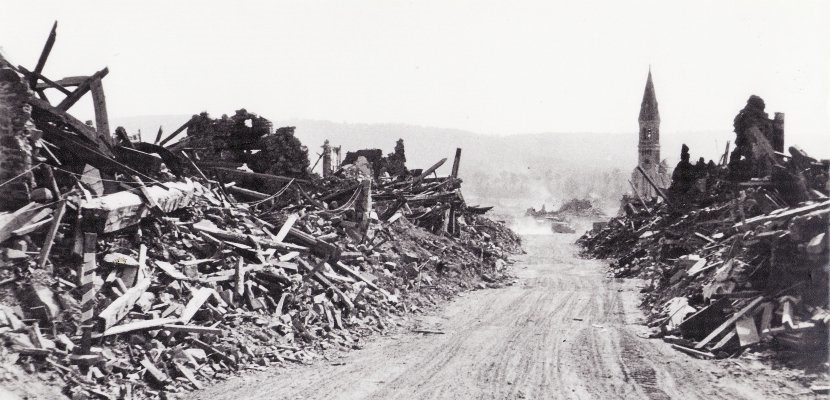
Aunay-sur-Odon 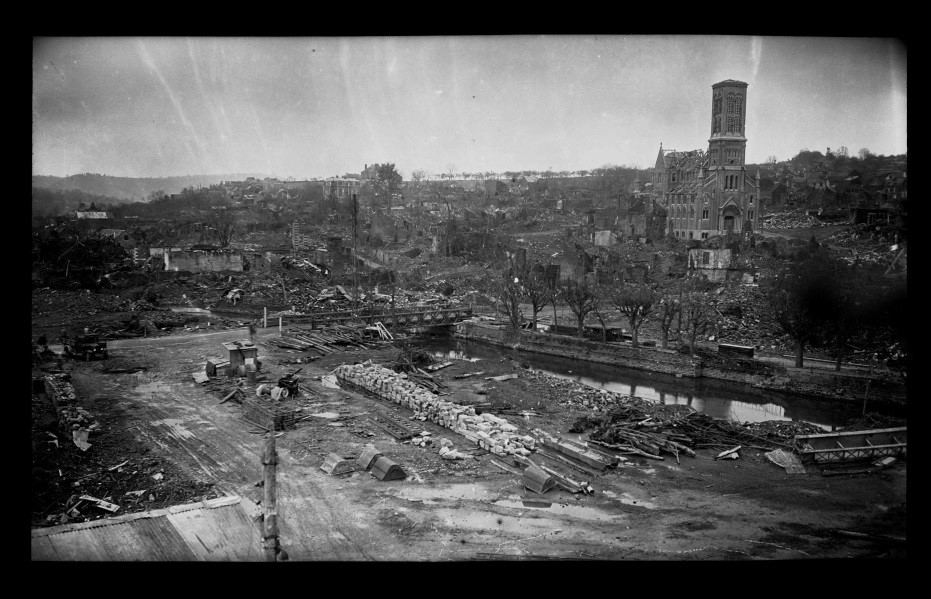
Condé-sur-Noireau 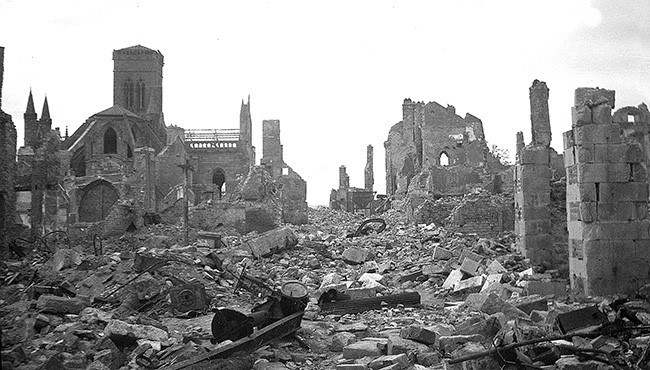
Vire
Land battles
In mid-June, the Allies were at the gates of the bocage, Caumont-L’Eventé was liberated on June 13 by American troops.
That same day, in the morning, the 7th British Armoured Division arrived in Villers-Bocage and crossed the village without difficulties. However when they left Villers-Bocage towards Caen, it encountered the Tiger tanks of Michael Wittmann (the ace with 119 victories on the Russian front). Only one Tiger tank is able to move and the four damaged others can still be used. But as soon as the alert is given, eight more German tanks come to the rescue. The entire English column was machine-gunned and the British tanks remaining in Villers-Bocage were destroyed one after the other.
The Panzher Lehr Division defeats the Allies at Tilly-sur-Seulles. The town will be taken and retaken 23 times by the belligerents for almost a month.
The front remains frozen for several weeks… The bocage remains inaccessible.
End of July, the American forces break through in the direction of Avranches (Cobra Operation). On their side, British and Canadians maintain strong pressure around Caen, securing significant German forces. They decided to attack what they call the enemy’s “soft underbelly”, between Caumont-l’Eventé and Tilly-sur-Seulles.
On July 30, General Montgommery launched the Bluecoat Operation to protect the American left flank and prevent the Germans from using heights such as the Mont-Pinçon. The British 2nd Army must move into the bocage in direction of Flers.
The advance is very slow because the tanks cannot manoeuver in these narrow paths. What makes the identity of our territory becomes a nightmare for Allies soldiers. The presence of hedges, characteristic of the bocage, allowed the Germans to hide to retaliate, causing heavy losses. It’s a real jungle war.
Villers Bocage was released on August 5, 1944. The capture of Mont-Pinçon was very difficult by the Allies because of its 365 m high. On August 6, tanks of the 13/18 Royal Hussars attacked the perilous climb and managed to neutralize the cannon the next day.
To understand everything about this large-scale military operation you can visit the Percée du Bocage Museum in Saint-Martin-des-Besaces.
Vire was liberated on August 8 thanks to the capture of hill 203, a key position of the German defense, located on the heights in the south of the city. A commemorative stele at the place called Monts Besnard, recalls the courage of the 112 fallen American soldiers. (Walk in the city of Vire)
The town of Condé-sur-Noireau was liberated much later, on August 17, by the 11th British Armored Division from Vassy.
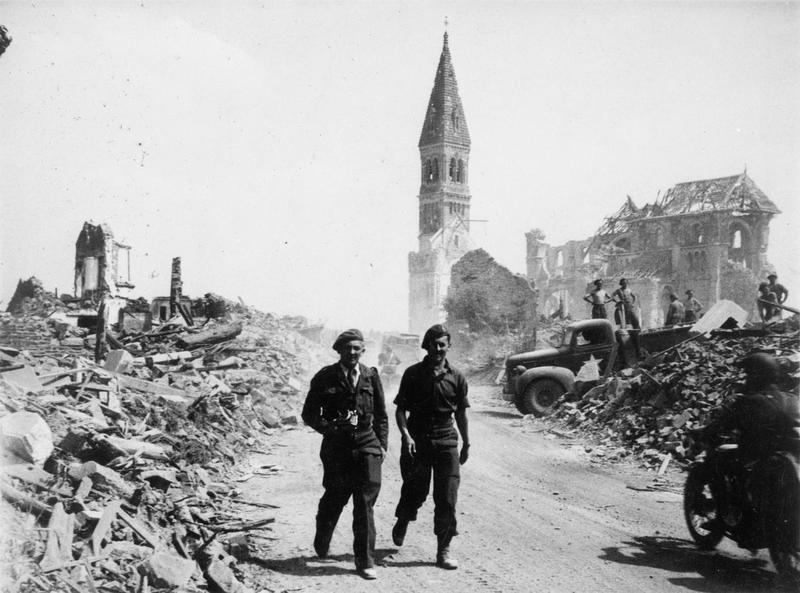
Aunay-sur-Odon during the liberation/





